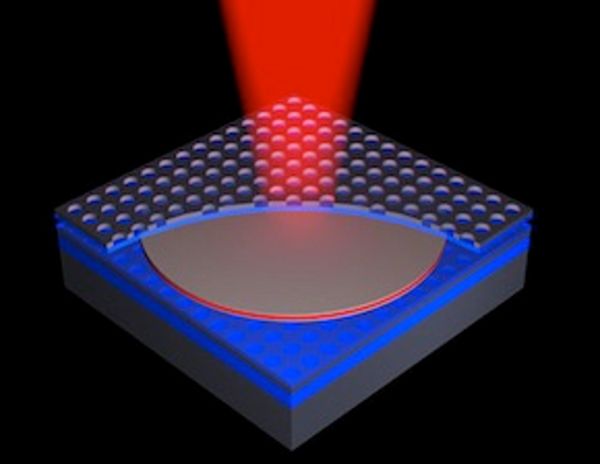
A paper published in the July 22 issue of the top scientific journal Nature Photonics illustrates a new type of laser, developed by researchers in the United States, which holds great potential for applications such as developing very advanced microprocessors.
The laser is especially well suited for creating optical connections aboard computer chips, in a manner that saves a lot of electrical energy. Therefore, finding a way of employing the device on a large scale could translate into both improved computing power and more energy efficiency.
Scientists from the University of Texas in Arlington (UTA) and the University of Wisconsin-Madison (UWM) worked together on developing the 2-micrometer-tall laser. This is several times smaller than the width of a human hair.
Such processors, featuring optical data transfer capabilities, would be able to perform their usual operations significantly faster, producing less heat, and losing less efficiency than possible with existing technologies.
Another candidate for on-chip applications is the edge-emitter lasers. However, devices in this class are around 30 micrometers tall, which means that they tower extremely high over today's highly miniaturized microprocessors.
“It sits tall on the chip, like a tower. That is definitely not acceptable,” explains UWM professor of electrical and computer engineering, and study researcher, Zhenqiang Ma.
The expert and UTA colleague Weidong Zhou, a professor of electrical engineering, receive funding from the US Air Force (USAF) Office of Scientific Research, the US Army Research Office and the US Defense Advanced Research Projects Agency (DARPA).
“We believe [the new surface-emitting] laser will be used to make data links more practically available,” Ma goes on to say.
“It is truly an interdisciplinary team effort. The co-existence of photonics with electronics on the chip level shall enable multi-functional energy-efficient super-chips for applications in computing, communications, sensing, imaging and so on,” Zhou concludes.
Via: Innovative On-Chip Laser to Improve Microprocessors
Tidak ada komentar:
Posting Komentar